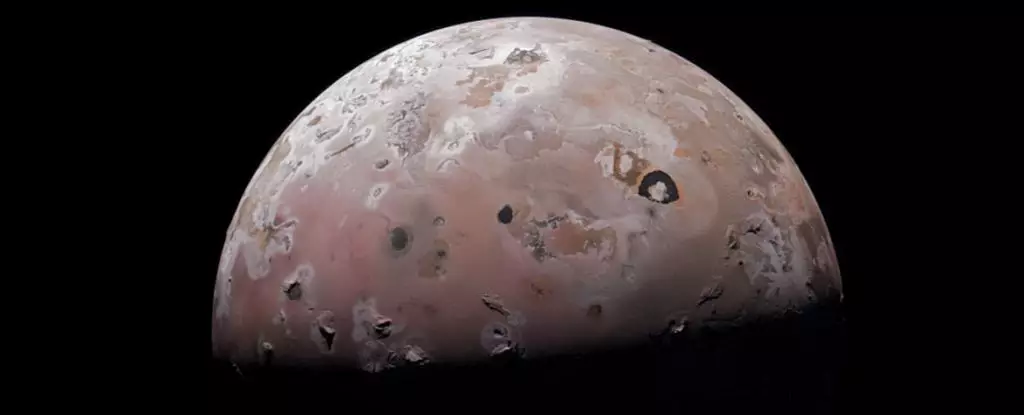Jupiter’s moon Io is no ordinary celestial body. It stands as the most volcanic object in the entire Solar System, and thanks to NASA’s Juno probe, we now have an unprecedented view of its volcanic secrets. During a close flyby on 30 December 2023, Juno captured remarkable images of Io, revealing its surface mottled with sulfurous hues and features shaped by its ongoing volcanic activity. This flyby was the closest any probe has ever approached Io in decades, coming within a mere 1,500 kilometers (930 miles) of the moon’s surface. The purpose of this mission is to gain a comprehensive understanding of Io’s unique characteristics.
Although not a large moon, Io exceeds Earth’s Moon concerning volcanic activity. The varying gravitational forces exerted by Jupiter cause stresses within Io’s interior, generating an immense amount of heat that keeps the moon gooey and prone to eruptions. Additionally, the gravitational influences from the other Galilean moons exacerbate Io’s volcanic activity, resulting in approximately 400 active volcanoes, with around 150 erupting at any given time. The constant venting of volcanic gases forms a torus of plasma encircling Jupiter, contributing to the formation of powerful and permanent aurorae at the planet’s poles. Exploring Io’s relationship with its host planet and the interconnected system of Jupiter and its moons remains an essential objective of the Juno mission.
The Juno spacecraft serves as a valuable tool for collecting data about Io to unravel its mysteries. Scientists aim to investigate the source of Io’s massive volcanic activity, determine the existence of a magma ocean beneath its crust, and understand the significance of tidal forces from Jupiter in shaping Io’s tortured surface. Juno’s close flyby on 3 February 2024, at another distance of 1,500 kilometers, marks an opportunity to gather further insights into Io’s volcanic behavior. Time is of the essence, as Juno has been orbiting Jupiter since 2016, and after three years of mission extension, signs of instrument degradation are starting to appear. The spacecraft will continue operating until September 2025 or until it reaches a point of no return.
Continued Exploration and Discoveries
While Io remains a focal point of study, Juno’s mission extends beyond this fiery moon. The spacecraft is diligently observing not only Io but also the other Galilean moons and, of course, Jupiter itself. Scientists eagerly await the collection of new images during the upcoming flyby in February. In the meantime, NASA’s Juno mission website provides an excellent source for the latest images captured by the spacecraft.
Juno’s unprecedented close flyby of Jupiter’s moon Io has enabled scientists to witness the moon’s volcanic activity in magnificent detail. With its sulfurous hues and features shaped by ongoing eruptions, Io is a truly unique celestial body. Through the valuable data gathered by Juno, scientists hope to unravel the mysteries of Io’s volcanic behavior, its internal composition, and its intricate relationship with Jupiter and the other Galilean moons. Despite the limited lifespan of the Juno spacecraft, the mission continues to pave the way for new discoveries and expand our knowledge of the Solar System’s captivating wonders.


Leave a Reply